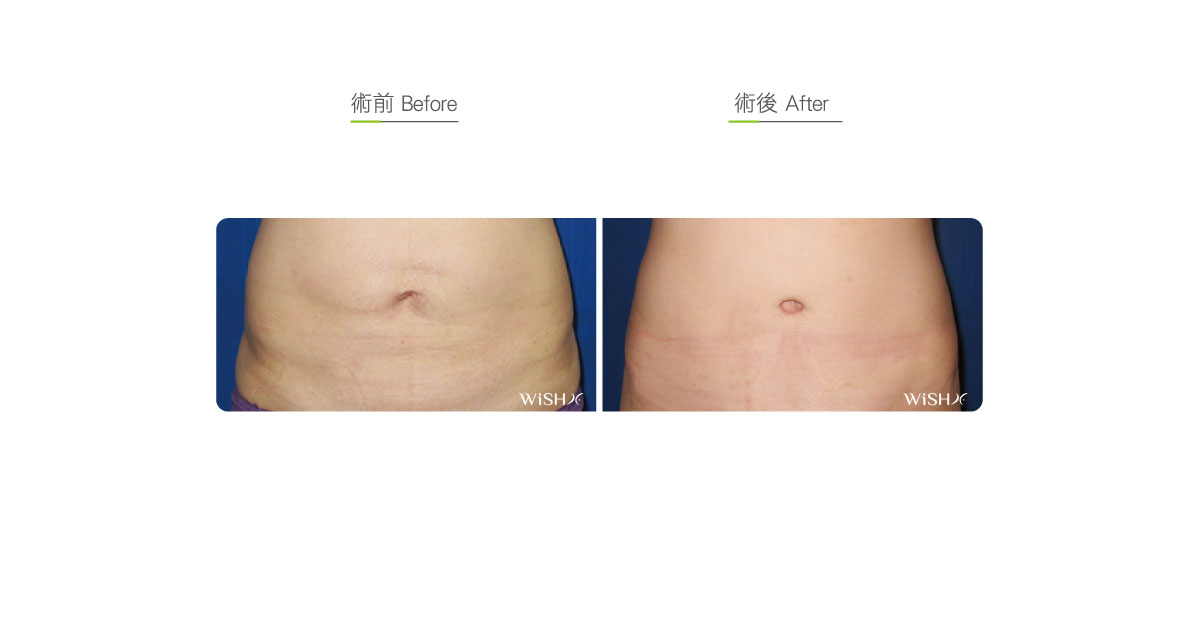Umbilical Reduction
The navel dilates due to high abdominal pressure, bulges as a result of pregnancy, or expands from obesity; the peripheral skin is also complicated because of laxity or stretch marks. Therefore, on surgery, the excess skin around the navel should first be radially removed and centripetally stitched and a continuous non-absorbable suture should be embedded around the navel to tighten the loose skin toward the navel via suture tension, thus effectively tightening and shrinking the navel.
Surgical conditions
Duration
0hr
- Type of anesthesia: IV sedation + local anesthesia
- Type of incision: An annular incision around the umbilicus
- Recovery: 2–3 days
- Removal of stitches: 7–10 days
General instructions
No food and water on the day of surgery
0hr
- Avoid abdominal exertion for 1 month postoperatively.
- Avoid strenuous abdominal activities for 3 months postoperatively.
- Wear a compression garment for 3 months postoperatively to prevent the loosening of the navel suture.
- Take care of the scar consistently for 6 months postoperatively.
Ideal candidates
- Patients with a congenital umbilical deformity
- Those with an umbilical deformity or extroversion due to multiple pregnancy
- Those with skin looseness around the navel due to dramatic weight loss
- Those unsatisfied with their too big or shallow navel
Possible complications
- Poor wound healing
- Umbilical inflammation
- Scar proliferation
- Peripheral skin folding (temporary)
- Incomplete correction
Surgical advantages
-
It effectively improves the poor appearance of the broad or big navel.
-
It redresses skin laxity around the navel.
-
It restores the normal appearance of the navel.
Surgical disadvantages
-
A scar may be left around the navel.
-
The skin around the navel may appear uneven.
-
The navel may become big again due to pregnancy in the future.
Possible procedure in conjunction
Before & After
These photographs represent typical results, but not everyone who undergoes plastic surgery will achieve the same.
Umbilical Reduction

